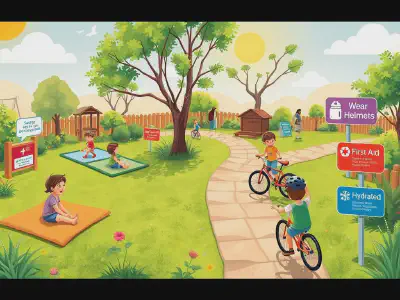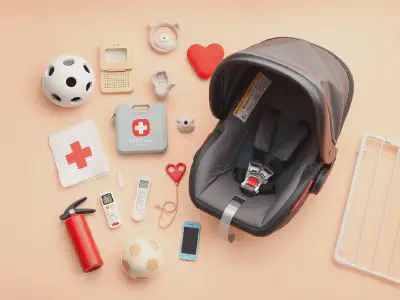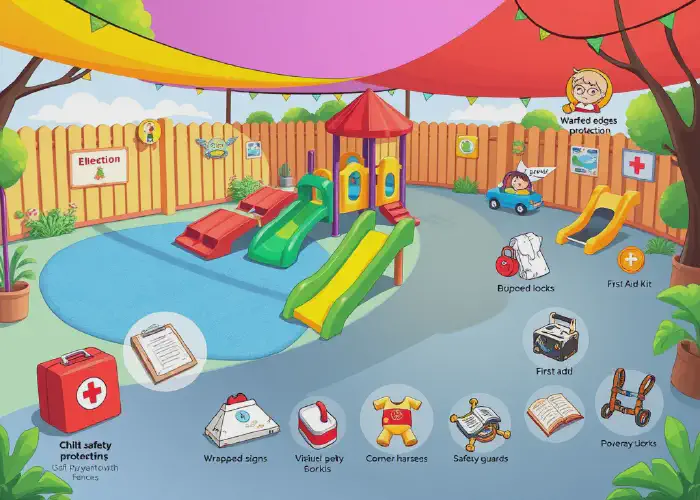Understanding Child Safety: A Comprehensive Guide
Child Safety is a crucial aspect of parenting and caregiving that aims to protect children from potential harm in various environments. Whether at home, outdoors, or online, ensuring the safety of children involves proactive measures to prevent accidents and injuries. As children grow and explore their surroundings, being aware of the risks and implementing safety strategies becomes essential for their well-being.
The importance of Child Safety cannot be overstated. Reports indicate that unintentional injuries are among the leading causes of death in children, highlighting the need for awareness and education on safety practices. From using proper safety gear during physical activities to teaching kids about the dangers of unsupervised internet use, making child safety a priority can significantly decrease the likelihood of accidents.
Child Safety also extends to creating a nurturing environment that promotes both physical and emotional well-being. This includes fostering healthy boundaries with technology, ensuring that play areas are secure, and maintaining open lines of communication to discuss safety concerns. The role of parents, guardians, and educators is vital in instilling a sense of safety in children, which they will carry into their adult lives.
As technology continues to evolve, so do the strategies and tools available to enhance Child Safety. From innovative safety gear designed for various activities to educational programs that teach children about potential dangers, staying informed about the latest developments is key to keeping kids safe. Engaging in community programs and sharing resources among families can also fortify child safety initiatives.
In conclusion, prioritizing Child Safety is an ongoing commitment that requires awareness, preparation, and vigilance. As caregivers, fostering a culture of safety ensures that children can explore the world confidently, while knowing they are protected from harm. By implementing comprehensive safety measures at home, outdoors, and online, we can help build a safer future for our children.
Safety Gear for Children
Safety gear for children comes in various types and is designed to protect them during different activities. Common types of child safety gear include helmets for biking or skating, knee and elbow pads for inline skating, life jackets for water activities, and safety harnesses for climbing. Each piece of gear serves a specific purpose and is essential in preventing injuries during play.
Choosing the right safety equipment requires considering the child’s age, size, and the specific activity they will be engaging in. It is important to look for gear that meets safety standards and is appropriate for the child's skill level. Parents should involve children in the selection process to ensure they are comfortable wearing the gear, which can influence their willingness to use it consistently.
Fitting safety gear correctly is paramount for it to function effectively. Gear that is too loose may come off during activity, while gear that is too tight can restrict movement and cause discomfort. Parents should follow manufacturer guidelines and, if possible, consult with professionals to ensure that helmets, pads, and other gear are fitted properly before children use them.
Innovations in children's safety gear are continuously emerging, with advancements that enhance performance and comfort. For example, lightweight materials or integrated technology like impact sensors in helmets are becoming popular. These innovations not only improve safety but also encourage children to wear gear that was once considered burdensome, further reducing the risk of injury during recreational activities.
Home Safety Tips
Creating a childproof environment starts with identifying potential hazards around the home. This includes securing heavy furniture to the wall, using safety gates for stairs, and installing window locks. Keeping sharp objects, medications, and cleaning supplies out of reach or in locked cabinets is crucial. Regularly assessing the home for safety improvements ensures that the environment remains safe as children grow and explore.
Essential home safety checks involve regularly testing smoke detectors and carbon monoxide alarms, ensuring fire extinguishers are accessible and not expired, and discussing emergency plans with children. Conducting periodic safety drills can help prepare the family for unexpected situations, providing peace of mind and ensuring everyone knows what to do in case of an emergency.
Emergency preparedness for families includes having a designated meeting place outside the home and teaching children how to contact emergency services. Families should create a communication plan that outlines how to reach each other in case of separation. By involving children in the planning process and practice drills, they understand their roles and feel more secure during emergencies.
Common household hazards and prevention strategies include addressing choking hazards by avoiding small toys for younger children and properly storing cords or strings to prevent strangulation. Ensuring that rugs are secured to the floor can prevent slips and falls, and regularly reviewing the home for loose wires or unstable furniture can mitigate risks present in everyday life.
Outdoor Safety for Kids
Safe play areas for children should be well-maintained and age-appropriate. Parks, playgrounds, and yards should be free of sharp objects, holes, and poisonous plants. Additionally, parents should supervise outdoor play and encourage children to follow rules about safe play to reduce the risk of injury while enjoying the outdoors.
Outdoor gear for protection includes appropriate clothing, hats, sunglasses, and sunscreen to shield against the sun's harmful rays. Footwear should be suitable for the activity, whether it be running shoes for sports or water shoes for beach days. Investing in high-visibility clothing can also enhance safety during outdoor activities, especially in low-light conditions.
Sun safety tips for kids involve applying sunscreen before outdoor play and reapplying regularly, especially after swimming or sweating. Children should be encouraged to wear hats and sunglasses to protect against UV rays and seek shade during peak sun hours. Educating kids on recognizing the signs of sunburn can empower them to take charge of their sun safety when outside.
Hydration and heat safety while playing outside is essential to prevent heat exhaustion or dehydration. Children should drink water before, during, and after physical activity to stay hydrated. Understanding the signs of heat-related illnesses, such as excessive sweating, dizziness, or clumsiness, can help parents intervene quickly to protect their children when they are outdoors, especially in hot weather.
Travel Safety Tips for Children
Car seat safety regulations vary by age and size and are designed to keep children safe during travel. Parents should familiarize themselves with the current guidelines for selecting the appropriate car seat based on the child's weight and height. Ensuring that car seats are correctly installed can significantly reduce the risk of injury in the event of a car accident.
Travel gear for kids, such as booster seats and travel-friendly strollers, enhance safety when out and about. Parents should research the latest travel gear that meets safety standards and fits their family's travel needs. Familiarizing children with their gear can also make travel more manageable and secure for families on the go.
Safety for children while flying includes securing them in their seats with appropriate restraints, discussing airport procedures, and preparing for turbulence. Parents should encourage children to stay seated during a flight and educate them about the importance of following safety instructions given by crew members to ensure everyone’s safety while traveling.
Emergency kits for family trips should include essentials such as first aid supplies, medications, snacks, and contact information for emergency services. Being prepared for unexpected situations can provide peace of mind and protect children during travel. Parents should involve their children in packing emergency kits so that they comprehend the importance of being prepared wherever they go.
Digital Safety for Kids
Setting up parental controls on devices is a critical step towards enhancing digital safety for kids. Parents can manage the content accessible to children, set screen time limits, and monitor internet usage through various applications and built-in features. These controls can help create a safer online environment and provide parents with greater peace of mind.
Educating kids about online safety is crucial in a digital age where children often encounter risks such as cyberbullying or inappropriate content. Conversations about not sharing personal information, recognizing suspicious behavior, and the importance of reporting issues empower kids to navigate the online world safely and responsibly.
Monitoring your child's online activities involves consistent check-ins and open communication about their internet use. Parents can establish rules about acceptable online behavior and encourage responsible usage to ensure children understand the implications of their actions. Regular discussions about their online interactions can foster trust and openness in the parent-child relationship.
Cyberbullying prevention tips include teaching children how to handle negative online interactions, such as blocking bullies, saving evidence, and seeking help from trusted adults. Encouraging empathy and kindness online, as well as fostering safe spaces for children to discuss their experiences, can help combat cyberbullying and promote a supportive digital community.








